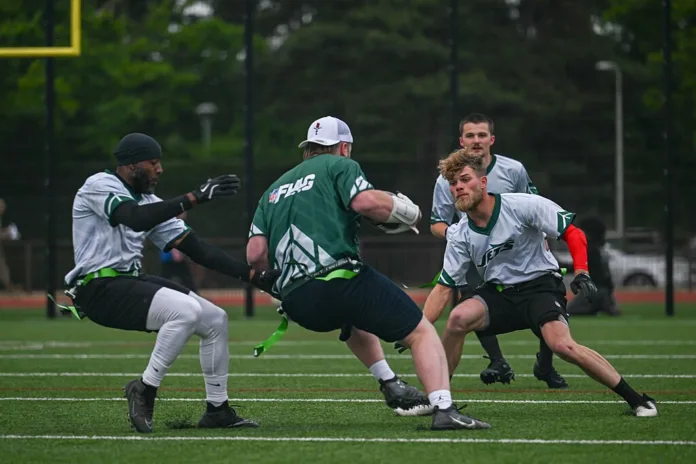Non-contact flag football surges globally, promises safer Olympic debut in Los Angeles 2028
Flag football is exploding onto the global stage. The non-contact, fast-paced offshoot of American football is rapidly gaining traction across continents as it prepares for its debut in the 2028 Los Angeles Olympic Games.
For decades, traditional tackle football has dominated headlines. But flag football’s simplicity and lack of heavy contact are pulling in an entirely new crowd. It attracts youngsters who shun risks inherent in traditional forms; it welcomes girls in large numbers, and it dazzles international bodies as a safer, more inclusive athletic escape.
The International Federation of American Football (IFAF) reports participation surging worldwide, with an especially steep climb among female athletes in the United States. The sport’s accessibility—less equipment, less contact, fewer barriers—makes it a natural fit for regions craving something sporty yet less dangerous.
In Val-de-Marne, just outside Paris, Europe will host a continental championship from 25-27 September 2025, its first such event in France in over twenty years. Organisers see this as more than a tournament: it marks validation. Broadcasters like BeIN Sports have agreed to cover it, guaranteeing that flag football’s visuals will reach millions.
Embed from Getty ImagesFrom China to the Pacific Islands, grassroots programmes are expanding. Schools are integrating flag football into physical education. In the U.S., the female sector has witnessed nearly 60% growth in participation. Youth programmes, coaches, referees—many are scrambling to meet demand.
Pierre Trochet, IFAF President, says the Olympics has turbo-charged flag football’s momentum. He emphasises “year-over-year barrier-breaking” since his election; more member federations, more nations entering events, more visibility. Countries that once ignored American football are now fielding teams, training coaches and investing in equipment.
Girls in Staten Island, young athletes in Hong Kong, programs being rolled out in the Pacific—all point to a sport transforming from novelty to global contender. What draws many is the non-violent sport ethic: players wear belts with flags; defenders snatch them rather than tackling. Injuries drop; spectators cringe less.
Yet challenges persist. Organisers debate standardisation—uneven access to fields, equipment and trained referees jeopardise consistency. Some nations lag behind. Also, while NFL backing brings resources and exposure, it raises concerns: will star power overshadow local talent? Will the sport become commercialised at the expense of its community roots?
Still, with approval from Olympic bodies, the 2028 inclusion acts as a tipping point. What was once fringe begins to feel inevitable. Youth see role models; administrators see investment; parents see safer alternatives; federations see opportunity.
In short, flag football is not just growing—it’s transforming. It redefines what contact sport means, pointing to a future where athletic competition coexists with caution, where safety becomes part of the spectacle, not the sacrifice. As the Olympic countdown advances, this sport is a symbol: evolution over tradition, inclusion over exclusion, minimal risk with maximal thrill.
